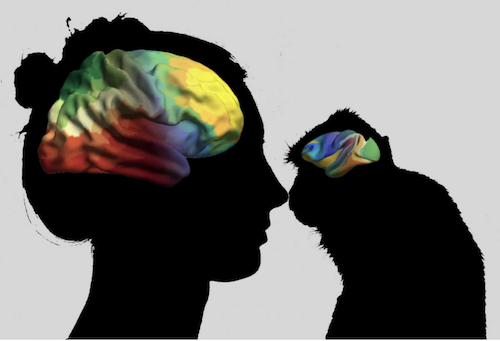|
|
Developmental Biology - Brain Development
Brain Circuits Shaped By Genetics & Confined Space
Competition between nerve fibers for space helps shape complex nerve circuits, providing clues to the role of genes in brain development...
Complex brain circuits in rodents can organise themselves with genetics playing only a secondary role, according to a new computer model published in eLife.
These findings help answer a key question about how the brain wires itself during development. They suggest simple interactions between nerve cells contributes to the development of complex brain circuits, so that a precise genetic blueprint for brain circuitry is unnecessary. This discovery may help scientists better understand disorders that affect brain development and inform new ways to treat conditions that disrupt brain circuit formation.
Circuits that help rodents process sensory information collected by their whiskers are a great example of the complexity of brain wiring. These circuits are organised into cylindrical clusters or 'whisker barrels' that closely match the pattern of whiskers on an animal's face.
"The brain cells within one whisker barrel become active when its corresponding whisker is touched. This precise mapping between the individual whisker and its brain representation makes the whisker-barrel system ideal for studying brain wiring." explains lead author Sebastian James, a research associate in the department of Psychology at the University of Sheffield, England. "
James and colleagues used computer modelling to determine if the pattern of brain wiring could emerge without a precise genetic blueprint.
Their simulations showed within the cramped quarters of the developing rodent brain, strong competition for space between nerve fibers from different whiskers can cause them to concentrate into whisker-specific clusters.
The arrangement of these clusters formed a map of the whiskers, assisted by simple patterns of gene expression within brain tissue.
The team also tested their model by seeing if it could recreate the results of experiments tracking the effects on a rat's brain development of losing a whisker.
"Our simulations demonstrated that the model can accurately track how factors inside and outside of the brain contribute to the development of cortical fields," explains co-author Leah Krubitzer, Professor of Psychology at the University of California, Davis, USA.
The authors believe this and similar computational models can be adapted to study the development of larger, more complex brains like those of humans.
"Many basic mechanisms of development in the rodent barrel cortex are thought to translate into development of the cortex, and may help inform research into neurodevelopmental disorders and recovery from brain injuries.
As well as reducing the number of animal experiments needed to understand cortical development, computational models like ours, offers new insights into how development and evolution interact to shape mammal brains — including our own."
Stuart Wilson PhD, Lecturer in Cognitive Neuroscience, University of Sheffield, United Kingdom, and senior author.
Abstract
The topology of the cerebral cortex has been proposed to provide an important source of constraint for the organization of cognition. In a sample of twins (n = 1113), we determined structural covariance of thickness to be organized along both a posterior-to-anterior and an inferior-to-superior axis. Both organizational axes were present when investigating the genetic correlation of cortical thickness, suggesting a strong genetic component in humans, and had a comparable organization in macaques, demonstrating they are phylogenetically conserved in primates. In both species, the inferior-superior dimension of cortical organization aligned with the predictions of dual-origin theory, and in humans, we found that the posterior-to-anterior axis related to a functional topography describing a continuum of functions from basic processes involved in perception and action to more abstract features of human cognition. Together, our study provides important insights into how functional and evolutionary patterns converge at the level of macroscale cortical structural organization.
Authors
Sofie L. Valk, Ting Xu, Daniel S. Margulies, Shahrzad Kharabian Masouleh, Casey Paquola, Alexandros Goulas, Peter Kochunov, Jonathan Smallwood, B. T. Thomas Yeo, Boris C. Bernhardt and Simon B. Eickhoff.
AcknowledgementsThe Authors, some rights reserved; exclusive licensee American Association for the Advancement of Science. No claim to original U.S. Government Works. Distributed under a Creative Commons Attribution License 4.0 (CC BY).
This is an open-access article distributed under the terms of the Creative Commons Attribution license, which permits unrestricted use, distribution, and reproduction in any medium, provided the original work is properly cited.
Return to top of page.
|
|
Oct 2 2020 Fetal Timeline Maternal Timeline News
 The human brain is organized along the same two axes which exist in all primates. Now, a computer simulation of nerve growth reflects that nerves in the cramped quarters of a rodent pup brain, compete for space, concentrating into whisker-specific bundles. CREDIT Valk/ MPI CBS
| |



